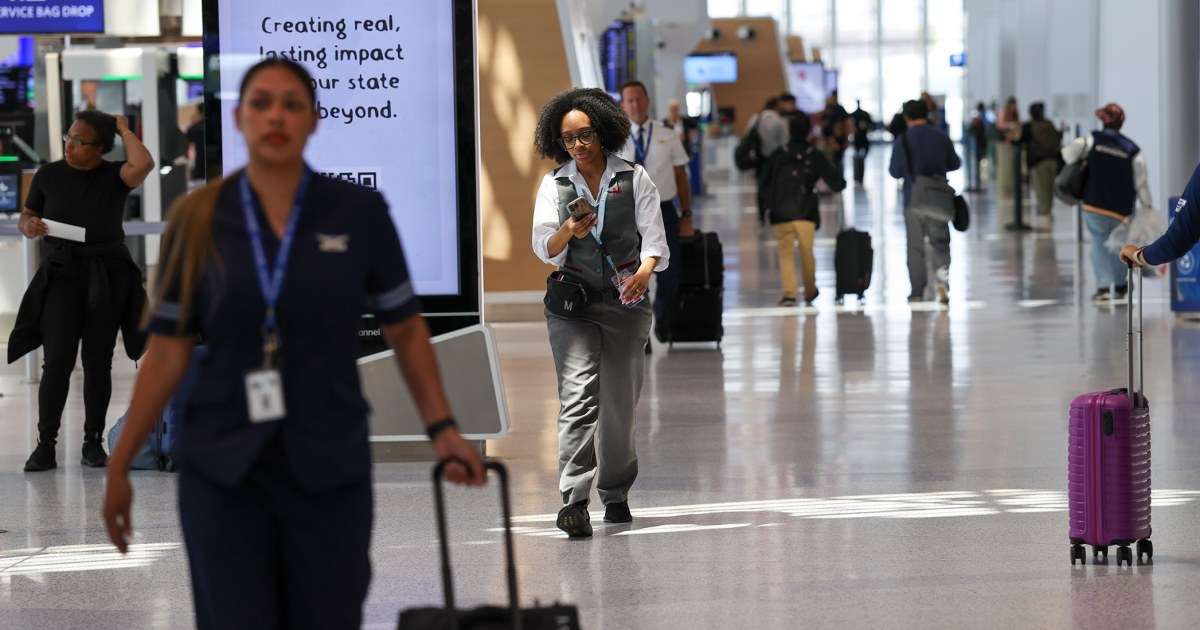The U.S. economy continues to send mixed signals. On Thursday, the Bureau of Labor Statistics will report job figures for June that may help clear up the picture.
Economists surveyed by The Wall Street Journal forecast that 110,000 new payrolls were added in June. That would be the fewest since February, and it would be the fourth monthly decline in the past six months. The unemployment rate, meanwhile, was expected to have climbed to 4.3%, the highest since October 2021.
Consumers and businesses are still grappling with the uncertainty caused by President Donald Trump’s policies, something further reflected in volatile data.
On one hand, the inflation rate has so far proven stable, while average earnings continue to grow at a healthy clip. Stocks have returned to all-time highs, and in testimony last week, Federal Reserve Chair Jerome Powell described overall economic conditions as “solid.”
“Look at labor force participation, look at wages, look at job creation,” Powell said. “They’re all at healthy levels now. I would say you can see perhaps a very, very slow continued cooling but nothing that’s troubling at this time.”
On the other hand, Powell’s assertions have not sat well with Trump, who has continued to harangue him to lower the federal interest rate. On Wednesday evening, the president said Powell should “resign immediately.”
Commentary from U.S. firms and various other data points paint a more worrisome portrait of the economy. The latest survey of manufacturers from the Institute for Supply Chain Management found some firms describing the business environment as “hellacious” and “too volatile” for long-term procurement decisions.
On Wednesday, the private payrolls processor ADP reported a net decline in jobs added, which hasn’t occurred since March 2023 — and before that, the depths of the Covid-19 pandemic. The May job growth figure was revised even lower, to just 29,000 jobs added, from 37,000.
“Though layoffs continue to be rare, a hesitancy to hire and a reluctance to replace departing workers led to job losses last month,” Nela Richardson, ADP’s chief economist, said in a news release published Wednesday morning.
Clarity about tariffs was supposed to have arrived by next week, with Trump having set July 9 as the deadline to negotiate new deals. While he said this week he does not plan to extend the deadline, the White House said last week that the key date was “not critical.”
Meanwhile, Trump’s tax cut and spending bill continues to be debated in Congress even as it has cleared some key hurdles.
“Companies need business visibility in taxes and policy if they are going to take the risk of hiring a new employee,” Peter Boockvar, chief investment officer of Bleakley Financial Group, wrote in a note to clients. “And tariffs, on again/off again, have just thrown mud into the gears of business activity.”
The ADP report has a mixed track record of predicting the official BLS figure, which is usually published a day or two later. Earlier in the week, the BLS reported data showing a somewhat more sound picture of the job market, with job openings having unexpectedly increased in June.
Yet, even then, the bulk of those openings were in the leisure and hospitality sector, while openings declined in manufacturing and professional and business services.
“The leisure/hospitality sector alone cannot support the labor market amidst a broader weakening,” analysts with Citi Research wrote in a note to clients.
An additional hiring report released this week by the job consultancy Challenger, Gray and Christmas showed that through June, U.S. employers have announced 82,932 planned hires, a 19% increase over the 69,920 announced at this point in 2024.
Yet that rate remains historically low, it said.
“Hiring announcements in 2025 suggest a cautious but stabilizing labor market,” firm Senior Vice President Andrew Challenger said in a release. “While companies are clearly adding workers at a higher rate than in 2024, the restraint shown relative to previous years indicates continued uncertainty around costs, automation, and the broader economic outlook. Without a strong economic driver, hiring may remain measured through the rest of the year.”
